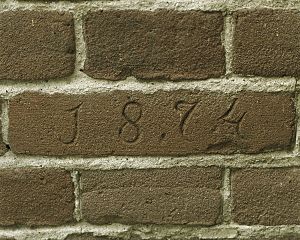

Dutch brick (Dutch: IJsselsteen) is a small type of red brick made in the Netherlands, or similar brick, and an architectural style of building with brick developed by the Dutch. The brick, made from clay dug from river banks or dredged from river beds of the river IJssel[1] and fired over a long period of time, was known for its durability and appearance.
Traditional Dutch brick architecture is characterized by rounded or stepped gables. The bricks were imported as ballast into Great Britain and the colonies in the east of America. Trinity College, Dublin, Ireland, founded in 1591, was originally built of red Dutch brick. Dutch brickmakers emigrated to New Netherland in America, where they built kilns for firing bricks locally. Bricks were being burned in New Amsterdam (New York) by 1628, but the imported bricks were of better quality. At first the bricks were used only for chimneys, but they were later used to face the lower story of the house, and then the entire house. Most of the surviving "Dutch Colonial" houses in New York do not in fact follow Dutch architectural practices, but there are several examples in Albany County which do.
Bricks were also exported by the Dutch for major buildings in their colonies in the east and around the world. The Castle of Good Hope in Cape Town, South Africa, was built in 1666, and its entrance was made of the small yellow bricks called ijselstene (IJssel stones). Christ Church in Malacca, Malaysia, the oldest Dutch church building outside the Netherlands, was made of Dutch bricks that had been brought as ballast in ships from the Netherlands, coated with Chinese plaster.
- ^ Berkhout, Karel (4 February 2011). "Naar zee met 6.500 bakstenen". NRC.